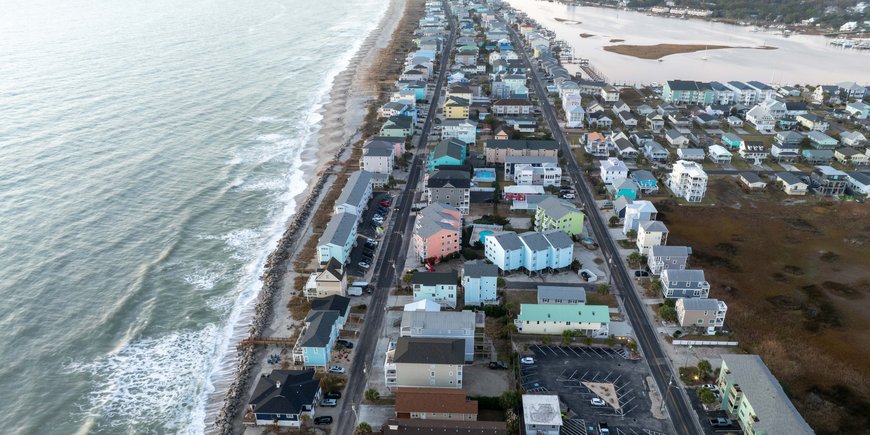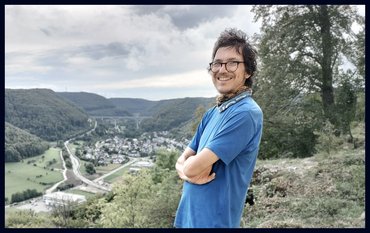Summary
Global warming will lead to more and in some cases even stronger earthquakes worldwide. This is the assessment made by researchers from the GFZ German Research Centre for Geosciences in Potsdam and the University of Southern California in a study published today in the journal Seismological Research Letters. The researchers state that the cause for this development is the progressive rise of global sea levels and more frequent strong storms due to man-made climate change. The rise of the sea level that is undisputed and an accelerated process is updated annually by the Intergovernmental Panel on Climate Change (IPCC). A further contribution will come from the increasing intensity of extreme weather events such as storms. Both of these factors increase the hydrostatic pressure in the underground leading to changes in seismic cycles – with an increasing risk of earthquakes and cascading effects such as landslides, tsunamis and liquefaction, particularly in the world's coastal regions.
Background: Origin of earthquakes
Earthquakes are caused by the sudden motion of rock blocks. This releases energy in the form of seismic waves, which has built up over long periods of time due to the continuous movement of tectonic plates. This loading process continues until the strength of the rock is exceeded and the opposite sides of a fault slip in an earthquake. The loading process then starts again, forming a recurring cycle of charging and discharging on the faults. This is called a seismic cycle. Depending on the geological conditions, this can last for years, decades or centuries.
Influence of man-made climate change
As a result of the man-made global warming, the melting of land ice, mainly in Antarctica and Greenland, occurs in an accelerating process and sea levels are rising worldwide. While the rate between 1901 and 1990 was 1.4 millimetres per year, between 1970 and 2015 it was already 2.1 and between 2006 and 2015 up to 3.6. According to the IPCC 2023 report, sea levels will rise by an average of between 0.43 and 0.84 metres by 2100 compared to the period 1986 to 2000. If all land ice melts, experts even predict a rise of around 70 metres in the long term. Whether this extreme scenario will be reached largely depends on further emissions of greenhouse gases. In any case, even with strict CO2-reductions, the effects described above will continue for centuries. At the same time weather extremes such as severe storms become more frequent and stronger.
Increasing earthquake risk
Both phenomena also have an impact on earthquake risk since they lead to a small but notable increase in pressure on tectonic faults in the subsurface due to hydrostatic load. This influences the earthquake cycles in all places in the world covered by seawater. Furthermore, coastal areas also become more vulnerable to cascading effects of earthquakes involving landslides, tsunamis, and liquefaction.
Prof. Marco Bohnhoff, Head of GFZ Section 4.2 “Geomechanics and Scientific Drilling” and lead author of the study reports: “Sea-level fluctuations of just a few decimetres are enough to trigger earthquakes. We can deduce this from a large number of observations, on the one hand from man-made, mostly harmless minor earthquakes that occur during water injection for oil, gas or geothermal heat extraction, but also from seismicity fluctuations caused by water reservoirs and Earth tides”.
Problem regions: the world's coasts
The increased seismic risk due to climate change is particularly problematic in coastal areas. Many critical fault zones and subduction zones, where one Earth plate dips under the other, are located there. And this is where 40 per cent of the world's population already lives today, mostly in rapidly growing mega-cities. Well-known regions at risk include San Francisco and Los Angeles, Istanbul and Tokyo-Yokohama, as well as many growing megacities in developing countries. The hazard situation is not well known everywhere, since the seismic cycles are sometimes longer than the settlement history.
Marco Bohnhoff explains: “The problem is that there are a large number of faults all around the world that are close to the end of their seismic cycle, and even small additional stresses are sufficient to activate them in an earthquake ahead of time, in other words to advance the natural seismic clock”. However, it is not yet fully known where critical faults are located.
Dr Patricia Martínez-Garzón, working group leader at the GFZ and co-author of the study, adds: “In addition, these earthquakes can also cause secondary effects such as landslides and soil instability due to the so-called liquefaction of soft soils, thus further intensifying man-made geohazards. This issue of climate change-induced earthquakes should be taken into account in the next generation of seismic hazard maps”.
Need for further research
Prof. Yehuda Ben-Zion from the University of Southern California in Los Angeles and co-author of the study says: “The more frequent and stronger storms will also increase the susceptibility of coastal areas to landslides, tsunamis, and liquefaction during seismic shaking”.
In their study, the authors make suggestions for better quantitative assessments of the expected seismic effects of sea level rise and more extreme weather effects. One example is to seismically monitor areas of strong melting, such as on Greenland or individual glaciers, in order to be able to draw analogies to the Scandinavian land mass to improve forecasts for what is now expected to occur globally. In Scandinavia, the process of melting land ice masses has already taken place since the last ice age. This has also led to earthquakes there. However, there were no megacities or critical infrastructure in place at that time, in contrast to the populated coastal areas worldwide that will be affected in the future.
Outlook: Mitigating man-made temperature increases and improving earthquake monitoring and prevention
According to the researchers, the growing seismic risk resulting from human-induced climate change, which adds to the already known more direct hazards and risks of global warming, reinforces the need to mitigate anthropogenic global temperature rise and invest in improved earthquake monitoring and more resilient infrastructure.
Bohnhoff: “The climate impact on cascading earthquake hazards, including triggered landslides, tsunamis and liquefaction, should be considered when developing earthquake risk mitigation plans”. This is particularly important for coastal regions, including megacities and critical infrastructure.
Original publication:
Marco Bohnhoff, Patricia Martínez‐Garzón, Yehuda Ben‐Zion; Global Warming Will Increase Earthquake Hazards through Rising Sea Levels and Cascading Effects. Seismological Research Letters2024; doi: 10.1785/0220240100
https://doi.org/10.1785/0220240100














![[Translate to English:] [Translate to English:] Abror Gafurov von dem Schriftzug "Welcome to Azerbaijan" und den UN und COP Logos](/fileadmin/_processed_/2/5/csm_2024_11_Baku_COP29_Abror_Gafurov_1042faec82.jpeg)


![[Translate to English:] Martin Herold standing in front of the library on the Telegrafenberg](/fileadmin/_processed_/c/d/csm_Martin_Herold_d385ee4dd9.jpeg)
![[Translate to English:] Many people are listening to a presentation in the GFZ lecture hall.](/fileadmin/_processed_/c/a/csm_1_Bild1_hell_b9c0e9f5ed.jpeg)






![[Translate to English:] Both scientists sitting on stools in front of a wall of books in the Telegrafenberg library](/fileadmin/_processed_/6/6/csm_Buiter_Castell_DORA_4_e87cb1ea18.jpeg)
![[Translate to English:] Gruppenbild mit 4 Personen](/fileadmin/_processed_/8/d/csm_20241017_GFZ-Emmerman-Medal-005_web_reinhardtundsommer_21a414fa4a.jpeg)






![[Translate to English:] Ice landscape with five red tents](/fileadmin/_processed_/8/9/csm_Zeltlager_auf_dem_Eis_Urheberin_Jenine_McCutcheon_5ced2d523b.jpeg)


